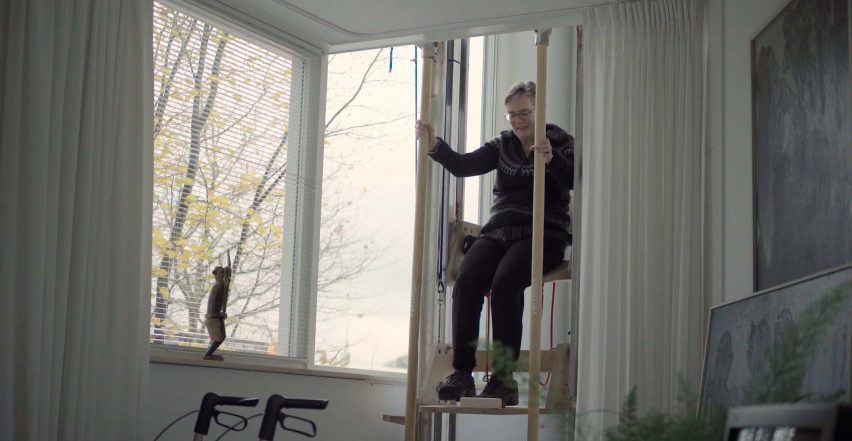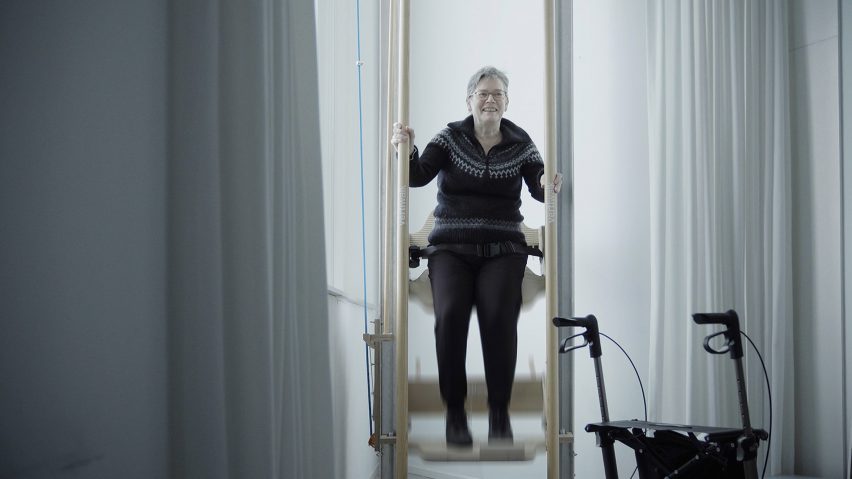Manually-operated Vertiwalk lift allows people with physical disabilities to move between floors
Eindhoven-based designer Rombout Frieling has created a vertical walking system that enables less physically able people to manually lift themselves between floors in a building.
The system, called Vertiwalk, was designed as an entirely human-powered alternative to stairlifts to allow people with disabilities to reach different floors, and exercise simultaneously.
The user has to perform a vertical rowing motion. By balancing themselves between a footplate and a seat, they can lightly shift their weight back and forth to help move themselves up to different floors.

VertiWalk works by the user performing a squat-like movement, encouraging movement in the users' hips and knees to keep them flexible, but without the strain that comes from walking up stairs.
As it is not reliant on external power sources, the VertiWalk system works in places without access to electricity, or that have unreliable power resources. It is also space-efficient, only requiring an area of 80 by 80 centimetres to be installed.
As cities grow upwards and living spaces become increasingly vertical, the designer wanted to develop a system that would allow people to keep movement in their lives, without them having to over-exert themselves.
Frieling believes that it is important for people to live independently at home for as long as possible, without having to rely on simply pushing a button to move up and down the stairs.
Frieling carried out various trials with potential users who cannot climb the stairs without a lot of effort and support.

"It is our mission to help the thousands of individuals who have contacted us and who are in need of vertical walking, as well as to learn about new ways of moving vertically through our increasingly vertical cities," said the designer.
The designer and his studio are hoping to find partners to help make the system a commercial reality, so that it can be more easily accessible to people who wish to live independently at home, as well as finding enjoyment in exercising again.
In a similar design, Royal College of Art graduate Elena Larriba created a pedal-powered, vertical transportation system that offers a space-saving alternative to lifts and stairs. The design, called Vycle, resembles the front half of a bike attached to a vertical rail, which could be fitted to the side of buildings, scaffolding or cranes.